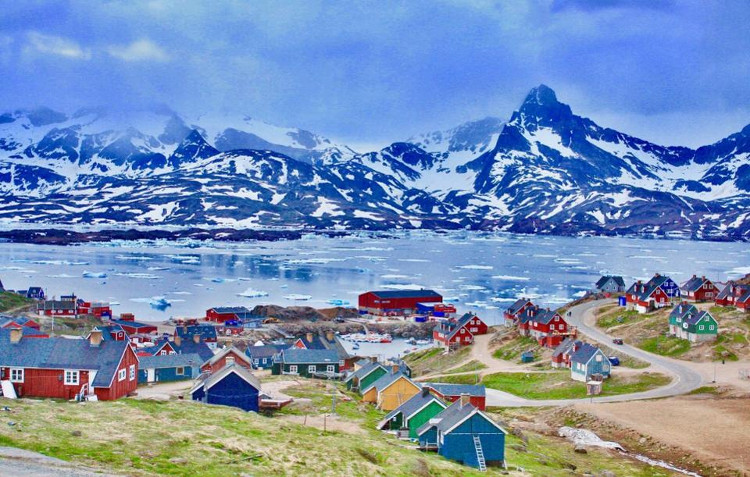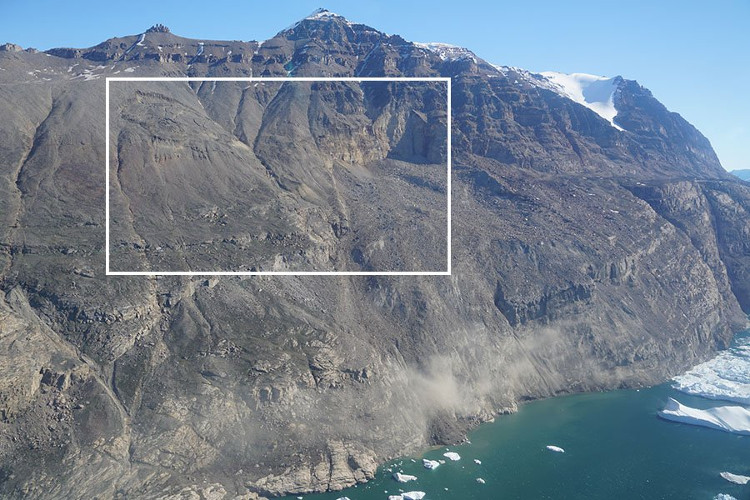Explain the mysterious tsunami that hit Greenland
On June 17, a giant 100-meter tsunami appeared and crashed into a sea of Nuugaatsiaq, southwestern Greenland.
This tsunami is really mysterious and this is the scientific explanation for it. The tsunami was caused by a landslide on the mountain , so large that it created a 4.1-magnitude earthquake and spread to the surrounding areas.
The tsunami reached a height of 100 meters, setting the record for the highest wave in history that ever hit the area. The wave flooded the residential area, killing four people and injuring dozens of others, mainly villagers fishing.

The fishing village of Nuugaatsiaq region, southwest of Greendland, where a giant tsunami occurs.(Photo: Wikipedia).
Most tsunamis are caused by slipping continental plates in fractures at the bottom of the sea, a sudden difference that generates a huge force pushing from the sea floor to the surface of the sea and creating waves terrible high.
Large earthquakes almost all accompanied tsunamis. But in addition to tsunamis caused by earthquakes, another type of tsunami is created when objects are as large as a large piece of rock from the collapsed mountains, a hill slipped down, or an asteroid, Direct impact on a shallow water.
When this happens, it will create an extremely strong flow of water pushing out the sides. These waves are usually not as high as normal tsunamis, but their destructive power is extremely formidable and serious.
In the history of a similar incident in the ancient city of Thera (now part of Santorini city of Greece), the volcano in the middle of the island suddenly burst out and swept away a large amount of material. The sea, this creates a giant wave and swept away everything, engulfing nearly all of this civilization into the Aegean Sea permanently.

The landslides of ice and snow on the mountains to the sea create big and unexpected waves.(Photo: Georgia Institute of Technology).
Or closer in 1792 when the famous Japanese Unzen volcano suddenly erupted, the entire southern mountains were eroded and sank immediately into the deep sea, creating a terrible tsunami that killed 15,000 people live on the other side of the bay.
Previously in this area, a 500-meter-high tsunami struck the Gulf of Lituya, Alaska in 1958, creating a powerful earthquake of 8.3 on the Richter scale.
The situation of climate change is continuing to worsen, the global temperature is gradually getting warmer and the ice in the permafrost such as Greenland is also melting, causing landslides. Snow and create these unexpected tsunamis.
- Decipher the mysterious tsunami in the East Sea
- See millions of years old radio stations under the Greenland ice sheet
- Mysterious mermaid in the Greenland Sea?
- Why is Greenland covered by ice?
- Greenland ice melted six times faster, raising global sea levels
- The 'alien' spectacle in the world's largest island
- See the beautiful Greenland, but it can soon be lost forever
- Meteors exploded near the US air base
- Sea ice near Greenland is at its lowest level in 800 years
- Greenland lost nearly 200 billion tons of ice in a month
- Greenland Island will be completely transformed by 2100
- Half of the cause of Greenland warming is natural
 'Fine laughs' - Scary and painful torture in ancient times
'Fine laughs' - Scary and painful torture in ancient times The sequence of numbers 142857 of the Egyptian pyramids is known as the strangest number in the world - Why?
The sequence of numbers 142857 of the Egyptian pyramids is known as the strangest number in the world - Why? History of the iron
History of the iron What is alum?
What is alum?